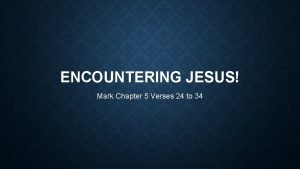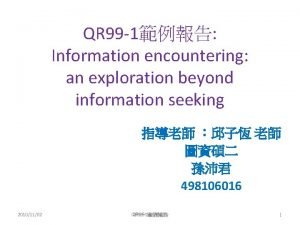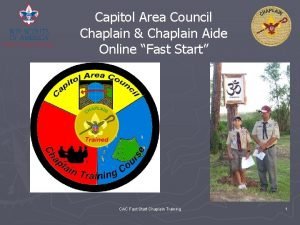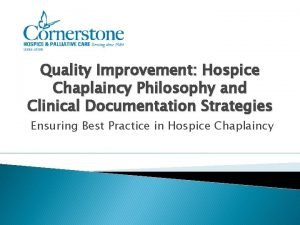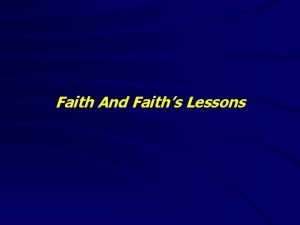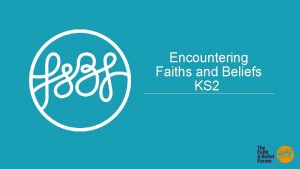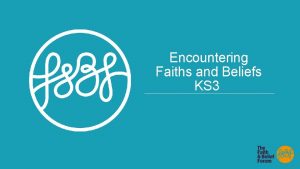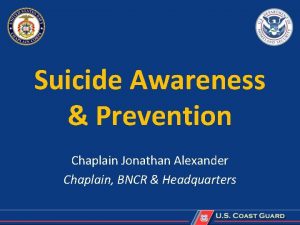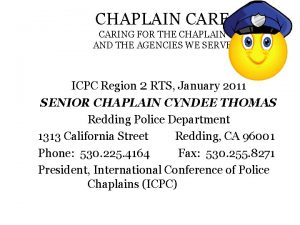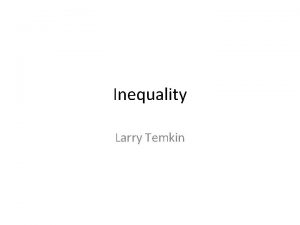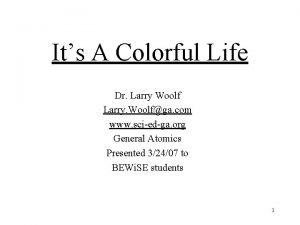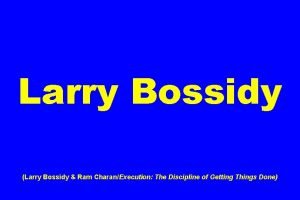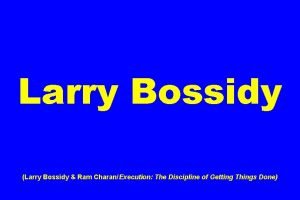Encountering Faiths in the Classroom CHAPLAIN LARRY LINDSTROM














- Slides: 14

Encountering Faith(s) in the Classroom CHAPLAIN LARRY LINDSTROM

Overcoming Ignorance Americans tend to know very little about religion This applies to their own religion, as well as the religions of others But Diamond points out that one key priority students express for their college years is to explore questions of meaning and purpose in life.

Fear of the Unknown As students are exposed to different perspectives (especially religious), they may fear the uncertainty that comes with questioning or moving away from their childhood religious traditions. But developing an authentic spiritual identity often demands such questioning and moving From Fernandez: one key spiritual competency is the ability to “live with the questions”

Encountering Antagonism One response to hearing about different perspectives may be rejection and even hostility Often the motivation for that antagonism is FEAR. While some students welcome and even seek out new insights, others find safety in the familiar (and fear venturing out beyond the known) Also, if a religious community perceives itself as a “loser” in the social/political context, its adherents may double down on defending the “old order”

The “Religion of Me” Other students may be on a “spiritual quest” that is nothing more than a search for confirmation of their own individualistic values The invitation to see that the spiritual life is not “all about you” may be especially challenging for them

Re-thinking Identity From Fernandez: we have to understand the role of religion in the formation of people’s identity Challenging and re-shaping our religious perspective implies nothing less than changing our identity

An Appreciative Understanding So how do we engage with a religious tradition that belongs to someone else? Increasing our knowledge helps, but knowledge alone is not enough. We need to understand how and why religion motivates intense (and sometimes contradictory) social and political movements.

Diversity within Religion We should note plenty of examples of differences and conflicts WITHIN each religious tradition That should remind us that we cannot speak of some monolithic “Christianity, ” “Islam, ” “Buddhism, ” etc.

The Stranger People of a different faith tradition may seem like the “stranger, ” the “other, ” the “alien” to us We need to remember that every religious tradition calls on its adherents to treat “the stranger” with respect, courtesy, and even love From Fernandez: how we treat the stranger in our midst becomes the litmus test of how much we have truly learned

Having a Religious Conversation For some, the goal in interfaith dialogue is to “win the point” or proselytize the other A more healthy approach is to reflect (and embrace) the truth in the other’s point of view, as we seek greater understanding and common ground We challenge students to be open, not in spite of their faith, but because of it (e. g. , Christianity and God’s radical inclusivity)

Re-shaping the Key Question Many of us approach someone else’s religious tradition and ask, “Is it true? ” It is more helpful to ask what tradition MEANS The “meaning” question focuses attention on the impact of one’s religious tradition, on the self and on others

Providing Genuine Hospitality Having an authentic conversation demands hospitality on our part One form: receiving, not just giving Another form: allowing space and presence where the “other” is free to be himself or herself

The CHANGE model (from Diamond) CREATE cognitive dissonance (don’t run from it) HELP students express their dissonance AIM to resolve dissonance through the presentation of information NOTICE students’ dissonance level and make room for conversation GIVE students an opportunity to clarify their understanding END the lesson by re-tracing the learning journey

The Vision From Fernandez: “Students sometimes experience a moment of awe when a genuinely new insight takes hold and they sense that who they were when they came into the class has been altered or impacted in a significant way. ”
 What are the 4 noble truths
What are the 4 noble truths St faiths crosby
St faiths crosby Encountering jesus in the new testament
Encountering jesus in the new testament Encountering the mongols comparing three cases
Encountering the mongols comparing three cases Encountering jesus in the new testament answer key
Encountering jesus in the new testament answer key Information encountering
Information encountering Encountering jesus in the new testament
Encountering jesus in the new testament Central army registry
Central army registry Ffa advisor symbol
Ffa advisor symbol Ffa chaplain opening ceremony part
Ffa chaplain opening ceremony part Boy scout chaplain aide prayers
Boy scout chaplain aide prayers What is a sports chaplain
What is a sports chaplain Hospice chaplain documentation examples
Hospice chaplain documentation examples Jennifer lindstrom md
Jennifer lindstrom md Joseph lindstrom
Joseph lindstrom


